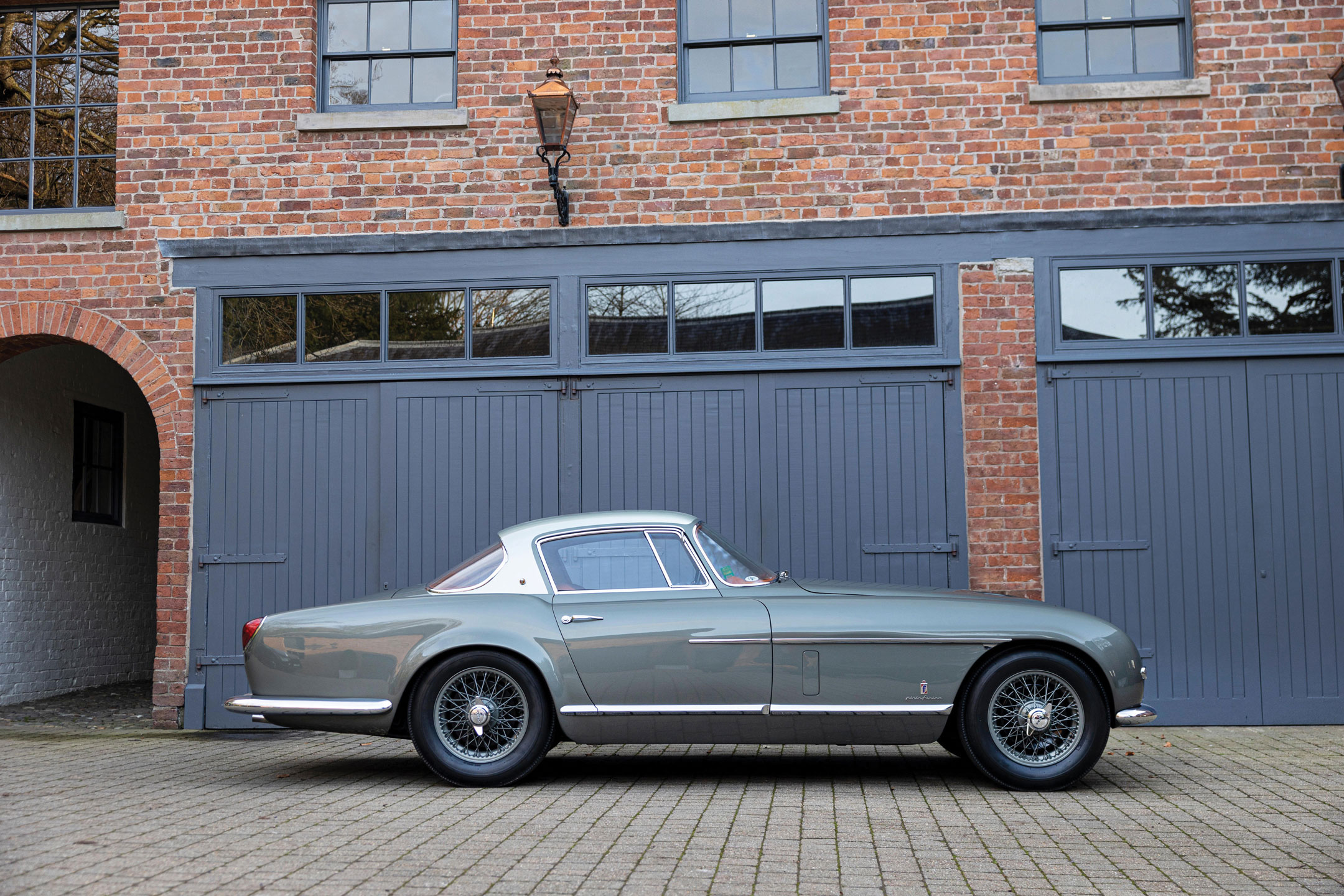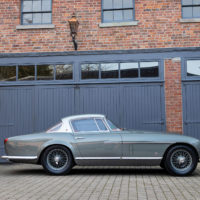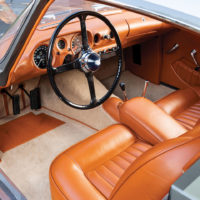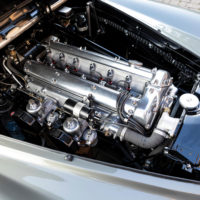SCM Analysis
Detailing
| Vehicle: | 1954 Jaguar XK 120 SE Coupé |
| Years Produced: | 1954–55 |
| Number Produced: | 1 |
| Tune Up Cost: | $1,200 |
| Chassis Number Location: | Plate attached to bulkhead |
| Engine Number Location: | Plate attached to bulkhead |
| Club Info: | Jaguar Clubs of North America |
| Website: | http://www.jcna.com |
| Alternatives: | 1952 Jaguar Supersonic by Ghia, 1955 Jaguar XK 140 Coupe by Ghia, 1956 Aston Martin DB2/4 Supersonic by Ghia |
This car, Lot 241, sold for $940,000, including buyer’s premium, at Bonhams’ Amelia Island auction on March 3, 2022.
While most automotive leaders probably consider themselves to be skilled predictors of their customers’ aesthetic tastes, few did so more consistently than Sir William Lyons. Instead of cloistered, clay-scented studio reviews, he had full-size, steel-bodied design models trucked to his Wappenbury Hall home. Painted in especially revealing high-gloss black, they could be appraised in daylight in his front yard. The ends more than justified these difficult means, however, as Jaguar became the most prominent face of post-war British-car styling.
It’s hard to imagine, then, that Lyons’ designs could be much improved upon. Several Italian coachbuilders tried anyway, with inconsistent results. Ghia’s three “Supersonic” XK 120s were highly advanced for their day but were unrecognizable as Jaguars and barely discernible from their Fiat 8V counterparts. Looking a bit more familiar was the “Flying Jaguar Coupé” from Stabilimenti Farina, ordered by Belgian Jaguar importer Joska Bourgeois, but its blocky grille and slab sides made it seem like a poor relation to Lyons’ lithe original.
The Italian Job
One XK-based proposal, however, stands out as being especially tasteful: Pinin Farina’s reclothing of this XK 120. Though it paid homage to the Jaguar’s thrusting fenders and vertical grille, it otherwise bore little similarity to any open or closed XK. At the front, upturned bumpers were adopted from Pinin Farina’s own Lancia B24, while delicate chrome side stripes conveyed a sense of speed, as did its canted roofline. Its long hood and minimal front overhang, coupled with a short deck and delicate, chrome-rimmed taillamps atop vestigial fins, completed the profile of a contemporary Italian GT. It could well have carried a Prancing Horse on its nose.
But why (and for whom) this project was developed has defied a definitive answer. Jaguar shipped a Pastel Blue XK 120 to Hoffman in 1954, which was hardly unusual. Curiously, however, it reappeared in magazine coverage of the May 1955 Geneva show — and with new coachwork. The answer to why Hoffman’s XK was transformed into an elegant, Italianate coupe has proved elusive, as no documentation survives. Was it an attempt to show Jaguar how its American sales could be enhanced with a revamped exterior, potentially repeating the smashing success of the Mercedes Gullwing? An intriguing idea, but a canny businessman like Hoffman would likely have anticipated the complex and costly logistics that daunted similar projects.
Assuming the car was being reworked in Torino in late 1954, time would have been working against Hoffman, whose business relationship with Jaguar was soon to be entirely severed. “That was also when Jaguar had had enough of Hoffman’s hijinks,” says Myles Kornblatt, author of a forthcoming Hoffman biography. “So no matter if he was the father of this coupe, or even just knew about it, the looming Jaguar divorce meant Hoffman was likely thinking more about his Benzes and Porsches than Jaguar when this car was completed.”
Dollar signs
With such an important piece of this car’s history lost to time, how do we judge its significance as a one-off, highly specialized sports car with so few comparable examples? At a nearly million-dollar price, it was more expensive than just about any other XK 120. The exception would be one of the two known Ghia Supersonics, which RM Sotheby’s sold for $2,062,500 at Monterey in 2015 (SCM# 266512).
While not a contemporary example, Bertone’s similarly specialized E-type-based Pirana coupe sold for $324,000 at RM Sotheby’s Monterey 2019 auction (SCM# 6909659). This might suggest that the Pinin Farina XK 120 was well sold, despite an upper-range estimate of $1.3 million, though it’s difficult to put a price tag on CMC’s extensive restoration efforts.
There is an alternative view, that the hammer price here was discounted by its lesser pedigree. “If it had a Maserati or Ferrari badge,” speculates Peter Neumark, “it would likely have sold for far more.”
One such possible point of reference would be the one-off restored 1956 Aston Martin DB2/4 Ghia Supersonic, sold at an RM auction for $2,310,000 in 2013 (SCM# 231618). By that measure, the price here seems most reasonable.
At any rate, what was paid here is what the market has decided this fascinating-but-incomplete footnote in Max Hoffman’s legacy is worth. We can only hope that perhaps someday we might learn how it came to be. ♦
(Introductory description courtesy of Bonhams.)



